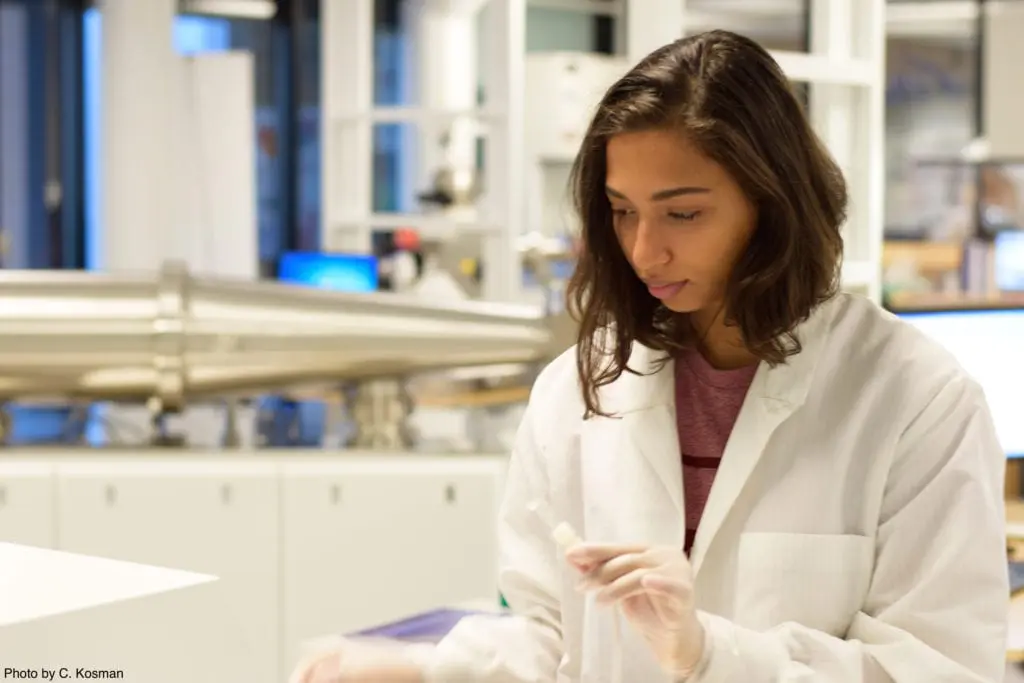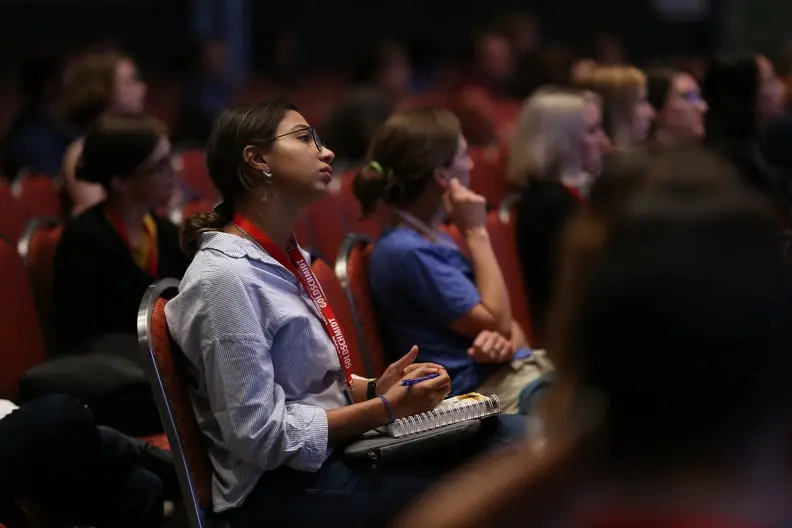Dissolve a rock in acid and turn it into an aerosol (or shoot it with a laser), submit it to temperatures higher than the surface of the sun, and then separate its components with magnets. What could go wrong?
Though it sounds excessive, this is what happens in Multi-Collector Inductively-Coupled-Plasma Mass Spectrometry (MC-ICP-MS) analysis. This instrument is commonly used by geoscientists for a wide range of applications, such as fingerprinting the source of geologic samples, tracing natural processes, and dating samples. Perhaps to no one’s surprise, there’s a lot that can go wrong.
Evelyn Frères, a geochemistry PhD researcher at the University of British Columbia, is studying MC-ICP-MS instruments to answer a vital question for geochemists: can you trust your data?
Inside the instruments
Evelyn was the winner of Seequent’s 2018 Data Speaks! Competition, and when we last checked in with her a year ago, she was working on three projects related to instrumental mass bias in MC-ICP-MS.
“I’m studying what’s going on inside MC-ICP-MS instruments, which we use to measure isotopic ratios in geological samples,” Evelyn said. “These results are used by scientists in several fields of science to try and answer important questions about our planet.”
MC-ICP-MS analysis can be used by scientists to answer questions like: how old is this rock, or, what is the source of this rock? (For example, why is Hawaii in the middle of the Pacific Ocean?) This can tell us more about the Earth, including how it formed.
Evelyn’s projects focus on ensuring the data from these analyses are as accurate as possible. This is because when samples are analysed in the MC-ICP-MS instrument, mass fractionation can occur, which can cause the measured ratios to differ from their true value. Unfortunately, scientists still don’t fully understand all the processes that could cause mass fractionation during MC-ICP-MS analysis, which makes it challenging to correct the results. Her research delves into these unknowns, hoping to reduce risks for the scientists who rely on this data to make decisions.

Keeping data accurate
“If you’re trying to study the dynamics of our planet, you want your data to be as accurate as possible,” said Evelyn. “You’re basing your conclusions on these measurements. Depending on the precision of the methods, you could potentially be making assumptions that aren’t accurate.”
Evelyn’s projects focus on determining what processes can take place inside the MC-ICP-MS during the analysis, so that if they alter the final data, the effects can be either minimised, or the results can be adequately corrected. She’s currently finished the experimental portion of two of her projects, and is just starting on the third.
“The first project was looking at some of the chemical reactions that could be happening inside MC-ICP-MS instruments,” Evelyn said. “More specifically, on the reaction between the elements neodymium and oxygen. Because of the high temperatures of the plasma, neodymium oxides are formed during the analysis. Those chemical reactions can cause the results to drift in a way we cannot predict, and therefore, cannot always be improved by using the traditional correction methods.”
Questioning the standards
Standards and reference materials are materials for which the composition is well-established and are used to calibrate instruments. They’re analysed on the instrument at regular intervals (for example, one reference material is analysed for every five samples that are analysed). Then, the results are compared against each other to see if how close they are to the true value, and if they need to be corrected.
“The second research chapter of my PhD thesis studies how using different concentrations of samples, as opposed to standards, can affect the corrections that we are making to our measurements,” said Evelyn. “To figure out if an instrument is performing well, you compare standards you analysed to their true value. So we’re asking – If I varied the concentration of my sample, and it’s not the same as one of the standards, will my measurements still be good?”
Evelyn says that most papers recommend matching your sample concentration to your standard, but that this is not necessarily possible for all samples.
Evelyn continues, “Sometimes my colleagues may have a mineral sample that is too small; there isn’t enough of it for them to actually achieve a concentration in their final solution that will yield precise measurements. Then you have to go through other means to try and fix that.”
Small samples create bigger problems
Evelyn’s third research project, the one she’s currently working on, is researching different sample compositions. She wants to uncover how changing a sample’s composition from the standard will make a difference in the results achieved from the MC-ICP-MS instruments.
“These instruments are very sensitive. They can efficiently detect and measure concentrations on the parts per trillion level,” Evelyn said. “Samples go through a purification process before being analysed, so only the element of interest is present. But even after going through purification, there can always be trace amounts of impurities in the sample. And those impurities could affect the measurements.”
Researchers like Evelyn are ensuring geoscientists have the best possible foundation when they’re tackling age-old questions about the Earth. Whether scientists are shooting rocks with lasers, or dissolving them with acid, the most important thing is that they can trust their results.
About Data Speaks!
The contest was held at the Resources for Future Generations 2018 conference, where competitors were asked to share their academic research in a way a non-specialist audience could understand. You can check out her winning interview here:
